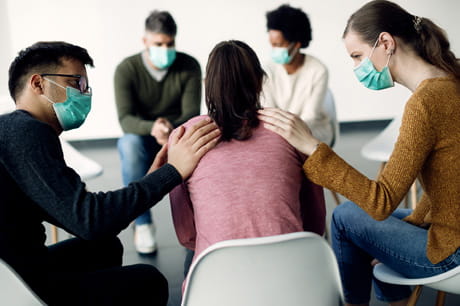What’s a standard drink?
When you visit your favorite happy hour spot with friends — or pour yourself a drink at home — it can be tough to know how much alcohol is too much. Knowing what's considered a standard drink can help you drink more responsibly.
“There’s a wide range of individual understanding of ‘one drink’,” says Kimberly Kabernagel, DO, medical director at Geisinger Marworth. “This makes it much harder to track how much you’ve had.”
Know how much alcohol is in your drink
Using the National Institute on Alcohol Abuse and Alcoholism guidelines for a standard drink, from beer to liquor to wine, can help you monitor your alcohol intake.
Beer
A standard drink of beer is 12 ounces, which is one can or bottle. Most beers used to only have about 5 percent alcohol. Light beers measure around 4.5 percent alcohol. As craft beers have gained in popularity, so has their alcohol content.
“Some craft beers are 8- or 9-percent alcohol, which means you might feel the effects after one beer,” says Dr. Kabernagel.
Liquor
A standard drink of liquor like rum, gin or tequila is 1.5 ounces. Liquor is often around 40 percent alcohol (80 proof). A simple mixed drink might be OK. More complex cocktails can contain several ounces of liquor, depending on the recipe.
Wine
Pouring yourself a glass of wine with dinner after a tough day? You’re likely drinking more than the standard 5 ounces per glass. Wine glasses are larger than the actual serving, which can make it difficult to measure.
Instead of “eyeballing” it, try using a liquid measuring cup or filling a dry measuring cup short of the 2/3-cup mark.
“When it comes to mixed drinks and glasses of wine, you should know the limits with drinking,” says Dr. Kabernagel.
How much alcohol is too much?
“Many people binge drink without knowing it. They’re doing harm to their bodies — both in the short term and long term,” says Dr. Kabernagel.
Binge drinking means drinking enough to raise your blood alcohol content to .08 percent or higher. For men, this is about five drinks in about two hours; for women, it’s about four drinks.
Take control of your health by avoiding heavy drinking, which puts you at risk of falls, accidents and other injuries. Over time, regular binge drinking can also lead to health problems including:
- High blood pressure
- Stroke
- Irregular heart beats
- Fatty liver disease
- Increased risk of cancer
Limiting your alcohol use also protects your mental health. Alcohol is a depressant, which can help you feel relaxed at first. But the blissful feeling wears off, and it can make depression, stress and/or anxiety feel worse.
When it’s time to get help
Know your limits, and if you have difficulty drinking in moderation, it might be time to seek help.
Some signs to consider if you think you’re drinking too much:
- You think about drinking a lot.
- You tend to drink more than you originally planned.
- Every time you drink, you need more alcohol to feel a “buzz”.
- It’s beginning to affect your life, like taking more time off work or missing important events.
- You’re no longer interested in activities you used to love.
- Family and/or friends have confronted you about your alcohol consumption.
- You participate in dangerous activities when drunk like driving while under the influence.
- You keep trying to stop, but you can’t.
If any of these signs seem familiar, talk to your doctor or a mental health professional. And if you or a loved one are ready to overcome a substance use disorder, visit Geisinger Marworth or call 800-442-7722.
Next steps:
How alcohol affects the quality of your sleep
Signs your loved one may be suffering from addiction
Learn more about addiction treatment at Geisinger Marworth Treatment Center





